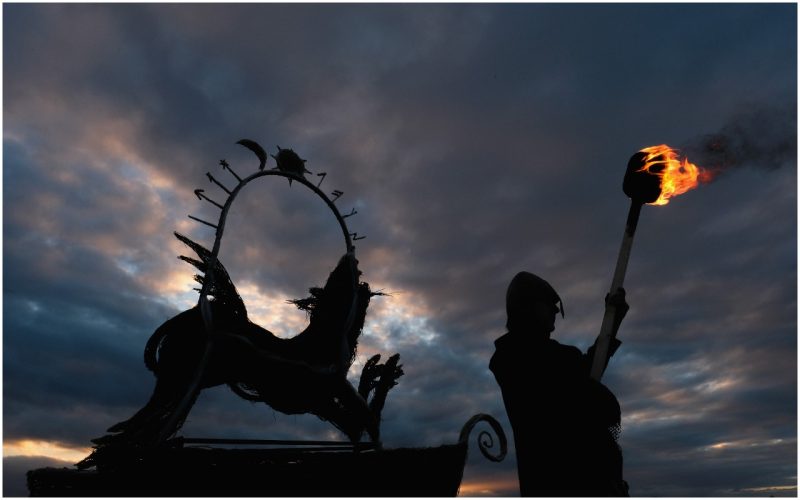The United Kingdom was once a very un-united group of territories. They were governed by a variety of groups, including the Romans, Britons, Angles, Saxons, Danes, and Norsemen. In the words of Thomas Hobbs (while not referring to the very early Middle Ages specifically), life was indeed “nasty, brutish and short.”
Present-day York, in North Yorkshire, England, dates back to at least the Roman era (although likely even earlier), when it was founded as the Roman fortress of Eboracum, and in its prime was the provincial capital and the largest town in Northern Britain.
After the fall of the Roman Empire and withdrawal of Rome from Britain, Eboracum became an Anglo-Saxon trading centre called Eoforwic. It came under Danish control in 867 A.D., and Jorvik was born.
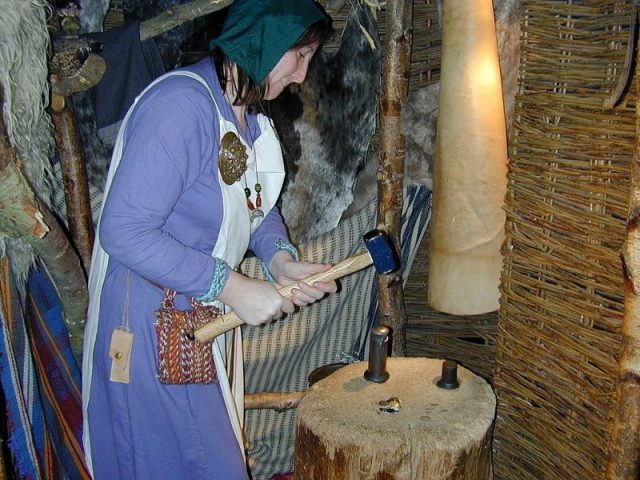
The term Jorvik actually referred to a greater area than just the urban settlement; it included the south of Northumbria, or much of modern-day Yorkshire. Even once it was controlled by the Danes, the area was still subject to invasion and short periods of rule by the English in the mid-10th century, until it was annexed by England in 954 A.D. Jorvik, or York, had great economic importance in the region, possessing a mint, and the Viking king Guthred was buried in York Minster. Eventually, after the Viking kingdom was absorbed into England, the title King of Jorvik eventually became that of the Earl of York in 960 A.D.
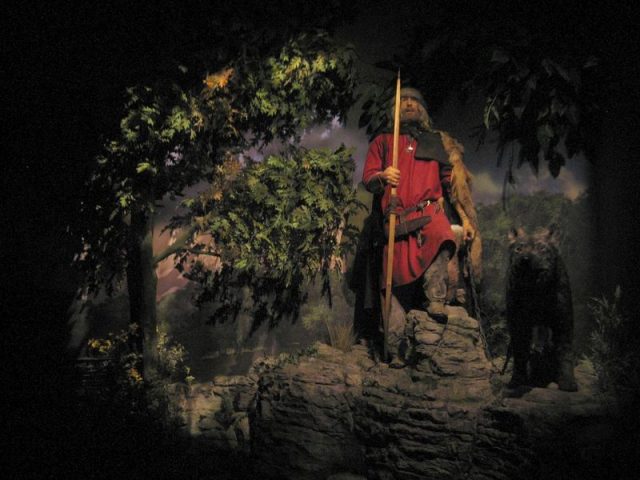
Fast-forward a little over 1,000 years to 1976 when the York Archaeological Trust began a five-year excavation in the vicinity of Coppergate in central York. During the archaeological dig, remains were found of several wooden structures dating from Viking Jorvik, as well as metal, leather, textile fragments, pottery, metal, and bones. Although the site was 1,000 years old, the items were well preserved due to the wet clay soil, which deprived the artifacts of oxygen, therefore preventing them from disappearing completely. Over 40,000 objects were uncovered in the end.
Cool Viking Facts
As a result of this treasure trove of Viking objects, the Jorvik Viking Centre was opened in 1984–less than 10 years after the dig started. The York Archaeological Trust used the evidence found at the site to re-create part of what a streetscape in Jorvik would have looked like, complete with lifelike mannequins, soundscapes, and even smells, including the fish market, pig sties, and latrines.
This multi-sensory experience completely immerses visitors in the Viking age, and gives them the chance to step back in time, even if only temporarily.
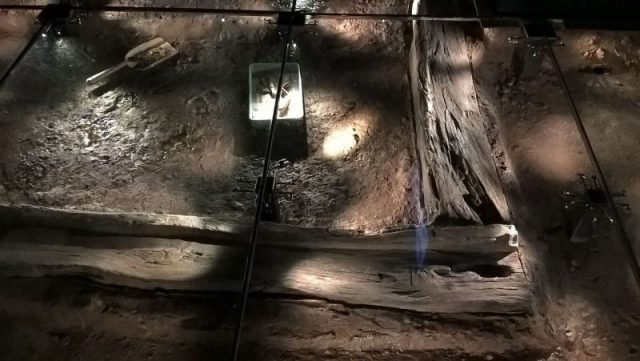
The center underwent extensive renovations in the early 2000s, and reopened as a “new and improved” version in 2017. The Ride Experience, which visitors take through the re-created town, is now a bit slower, allowing more time to take in all of the sights, smells, and sounds.
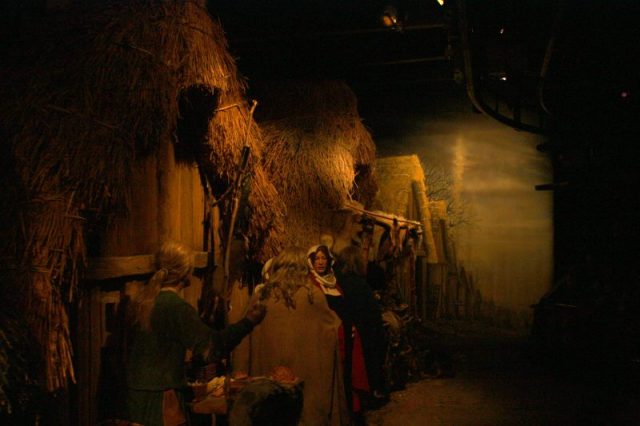
The traditional museum area includes about 800 items from the archaeological site, as well as interactive displays and museum staff in character as people from the era portrayed. Even the mannequins have been carefully thought through. Facial recognition technology was used to re-create the highly realistic figures based on human skulls found in a cemetery that dates from the Viking Age.
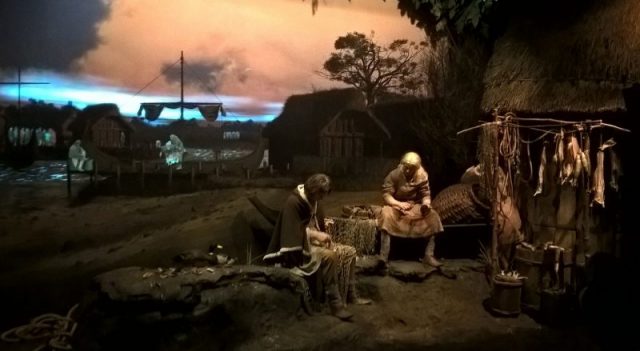
Visitors encounter many characters at Jorvik, including the Hunter and his dog, a slave trader, blacksmith, fisherman, weaver, and an Arabic trader. Interestingly, in addition to a Viking storyteller, there is also a priest, acknowledging that while the Vikings who came to Britain’s shores were not Christians, they adopted the religion relatively quickly, and there is evidence of a Viking-age church to the rear of Coppergate.
One of the great appeals of the United Kingdom, and indeed Europe as a whole, is the layering of history that can be found almost everywhere. York is a prime example of such layering–from pre-Roman through the Roman era, Viking, medieval, and modern, all mixed together in one city. The Jorvik Viking Centre is a must-see in York, but happily just one of several sites of great interest there, and throughout Great Britain.
Patricia Grimshaw is a self-professed museum nerd, with an equal interest in both medieval and military history. She received a BA (Hons) from Queen’s University in Medieval History and an MA in War Studies from the Royal Military College of Canada, and she completed a Master of Museum Studies at the University of Toronto before beginning her museum career. She has lived and traveled all over Canada and Europe.
